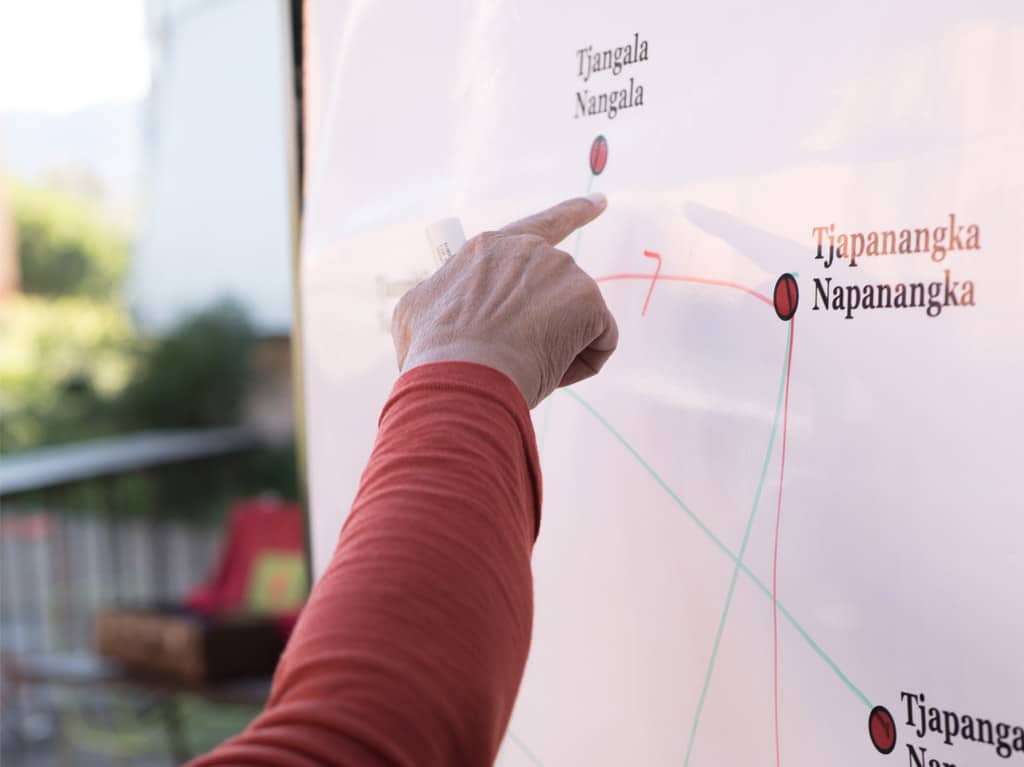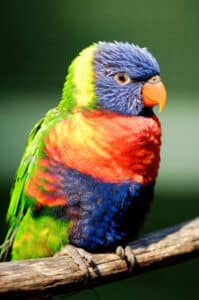
If you haven’t heard about The Age’s cold case investigation ‘Wrong Skin’ in the past two weeks, you will. Led by reporter Richard Baker, it was launched with much ado two weeks ago.
Julie Buck’s friends never believed the young mother would have abandoned her daughter when she disappeared with her forbidden lover. It took nearly a year for her remains to be found. The former detective who identified the skeleton found near the remote Aboriginal community of Looma in 1994 as Julie Buck, says there was always a suspicion that tribal punishment may have been a factor in her death. The mystery of how the 23-year-old mother died and the fate of her missing boyfriend, Richard Milgin, who was 24 at the time, are at the centre of The Age’s new investigative podcast Wrong Skin.
The Age, 11/07/2-18
We, along with many of our family and friends anxiously await the release of each episode. Our niece in Fitzroy Crossing even pulled an all-nighter playing catch up. Our phones and social media are abuzz, as are conversations in the Kimberley.
It is a perfect storm of classic tragedy and crime investigation – and unfortunately a true story. A death, a missing person, traditional values, wisdom and cultural laws butting against white fella systems of power and money. The issues deepen and expand in complexity with each episode.
It just so happens, Munya being a traditional owner from the Kimberly, that in our cultural awareness training programs we teach a skin system from the region to demonstrate many messages, but especially around the themes of complexity, ingenuity, belonging and inclusivity.
We do this through an activity we have developed – ‘The Skin Game’. This experiential game is strategically profound, enlightening and comedic. However, the implications of not following the skin laws are anything but comedic as we learn in Wrong Skin.
Making matters worse, Richard was from a skin group which made his relationship with Julie forbidden under traditional law, commonly called “wrong skin” in the region.Being in such a relationship exposed the couple to the risk of punishment from senior men whose role was to enforce the traditional law.
We urge our training participants and anyone interested in learning more about kinship and skin systems to listen to this podcast.
If you would like to know more about the system, we include extracts from a post written by Munya Andrews (Whose your Daddy?) below and we encourage you to talk to us about our Cultural Awareness Training programs:
What is ‘skin’?
The Aboriginal English term ‘skin’ refers to the traditional kinship structures that govern Aboriginal concepts of family. All across Australia, Aboriginal people traditionally lived according to strict rules dictating who could marry who, who you can joke with, who you can or cannot speak to (taboo or avoidance relationships), who you are socially obligated to and so on. Skin also sets out how people are related to one another and the kinship terms they must use.
The term ‘skin’ has little to do with actual skin colour and more to do with how people are related to one another, either on a biological or social basis. Under the skin system, family includes biological and all non-biological relatives (not just our in-laws (those related through marriage.) They are considered just as important as our blood relatives. By definition this automatically creates extended families.
Where did skin originate and what purpose does it serve?These kinship patterns and associated rules for human conduct and relationships were established long ago in the Dreamtime. They not only maintain law and order but more importantly keep the bloodlines pure by not crossing over. This is absolutely imperative in small genetic pools to prevent in-breeding with its genetic complications. In the Kimberley region where I come from, Elders point out multicoloured birds such as blue mountain parrots as living examples of what happens to newborns when people don’t follow the skin rules and marry the wrong way. What this practice reveals is knowledge of genetics.

The Skin Birds
How many skin groups are there?
Typically skin groups vary in count from sets of groups of 4, 8, 16, 32 and 64(or more depending on the system) into which community members are born. Skin groups are made up of both sexes and are intergenerational. A comparable system in western cultures is found in astrology in the zodiac. In this system of 12 star signs, there are 4 sets of 3 signs grouped together based on their elemental qualities of air, earth, fire and water.
Aboriginal skin strictly forbids ‘star-crossed’ love relationships referring to them as ‘wrong-way’ marriages.
Is Aboriginal skin still followed today?
In many places across Australia these traditional skin systems are still followed. While they may vary in size and names, the rules governing social interaction and obligation are remarkably similar in application, context and meaning. And while they may be culturally specific to particular areas there are many cultural overlaps that make the system translatable to other Aboriginal nations. What this means is that Aboriginal people are easily able to fit into an existing structure elsewhere and interact with one another appropriately even though they may come from different nations or communities. This is because skin dictates what the correct kin relationships are and the socially correct way for individuals to behave towards one another. Even where colonisation has had a devastating impact on Aboriginal cultures and languages, you will still find Aboriginal people relating to one another along traditional skin lines. This is abundantly evident by the extensive use of English kinship terms such as ‘Aunty’, ‘Uncle’, ‘Cousin’, ‘Brother’, Sister and so on.
If you would like an immersive experience of ‘skin’ and to learn more book a strategy call with our of our cultural awareness experts here.
© Evolve Communities, 2020
